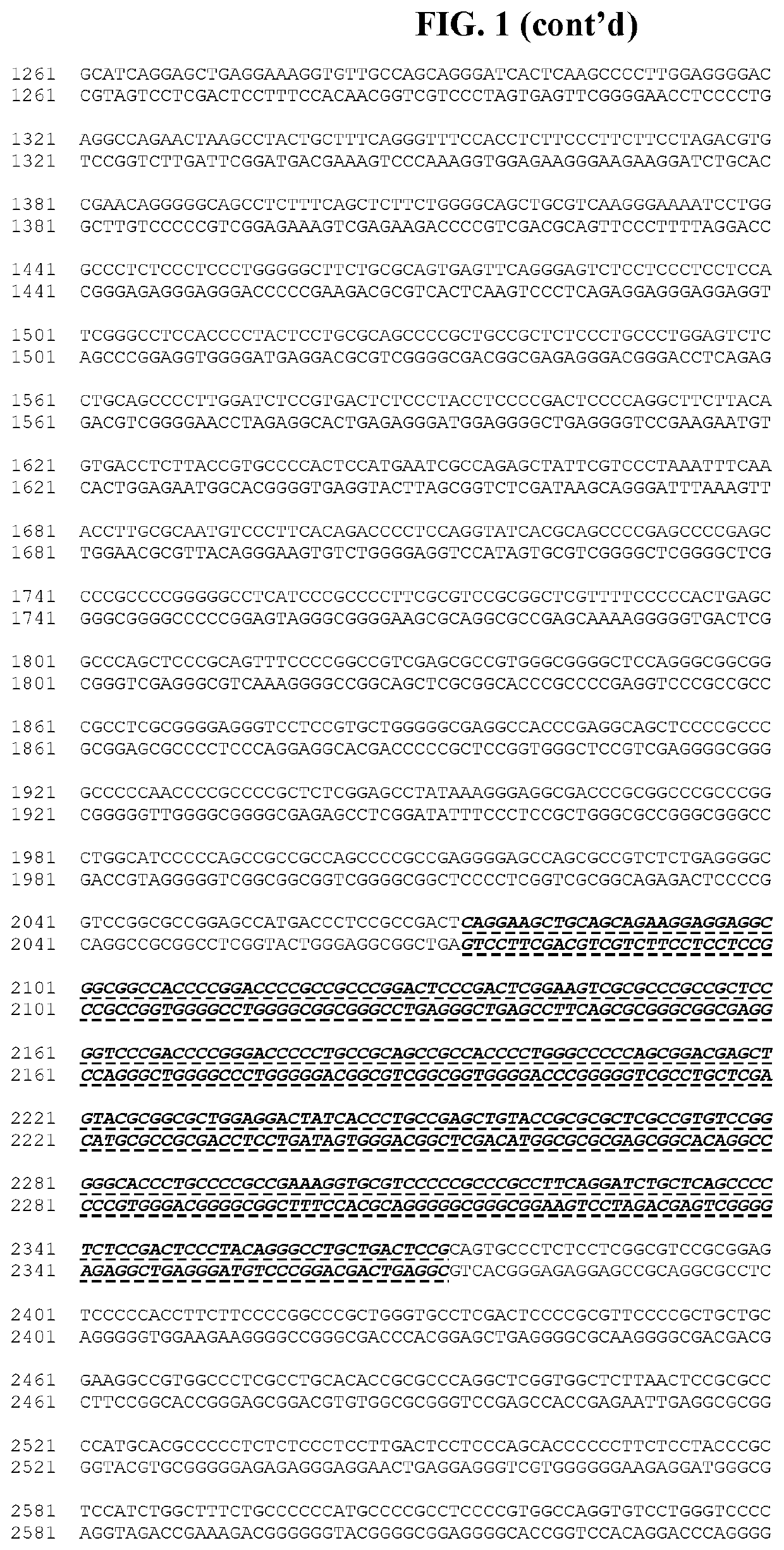Diagnostic gene marker panel for colorectal cancer
a colorectal cancer and gene marker technology, applied in the field of colorectal cancer diagnosis gene marker panel, can solve the problems of inconvenient diagnosis, inability to accurately predict the risk of cancer, and inability to accurately diagnose symptoms, etc., to achieve a higher level of methylation
- Summary
- Abstract
- Description
- Claims
- Application Information
AI Technical Summary
Benefits of technology
Problems solved by technology
Method used
Image
Examples
example 1
CAHM: Colorectal Adenocarcinoma HyperMethylated
Single-Plex Performance:
[0649]74 normals: 0.8 pg hypermethylated / mL plasma (95% CI: 0.2; 1.4)[0650]73 adenomas: 9.1 pg hypermethylated / mL plasma (95% CI: −8; 27)[0651]73 cancers: 1788 pg hypermethylated / mL plasma (95% CI: 231; 3344).
[0652]The CAHM assay (threshold cut of 3 pg / mL plasma) is 55% sensitive for colorectal cancer with a 93% specificity (FIG. 1).
GRASP: General Receptor for Phosphoinositides 1-Associated Scaffold Protein.
Single Plex Performance:
[0653]34 normals: 1.3 pg hypermethylated / mL plasma (95% CI: 0.2; 2.5)[0654]33 adenomas: 0.1 pg hypermethylated / mL plasma (95% CI: −0.1; 0.4)[0655]33 cancers: 670.8 pg hypermethylated / mL plasma (95% CI: −470.7; 1812)
[0656]The GRASP assay is 58% sensitive for colorectal cancer with a 100% specificity using a threshold cut of 20 pg methylated / mL plasma (FIG. 2).
IRF4: Interferon Regulatory Factor 4
Single Plex Performance:
[0657]24 normals: 6 pg hypermethylated / mL plasma (95% CI: 2.9; 9.0)[06...
PUM
| Property | Measurement | Unit |
|---|---|---|
| time | aaaaa | aaaaa |
Abstract
Description
Claims
Application Information
 Login to View More
Login to View More - R&D
- Intellectual Property
- Life Sciences
- Materials
- Tech Scout
- Unparalleled Data Quality
- Higher Quality Content
- 60% Fewer Hallucinations
Browse by: Latest US Patents, China's latest patents, Technical Efficacy Thesaurus, Application Domain, Technology Topic, Popular Technical Reports.
© 2025 PatSnap. All rights reserved.Legal|Privacy policy|Modern Slavery Act Transparency Statement|Sitemap|About US| Contact US: help@patsnap.com



